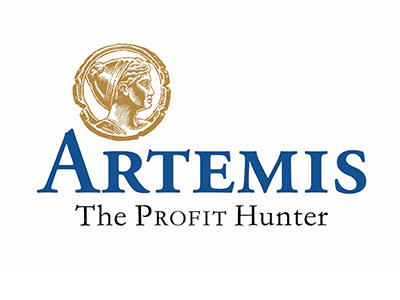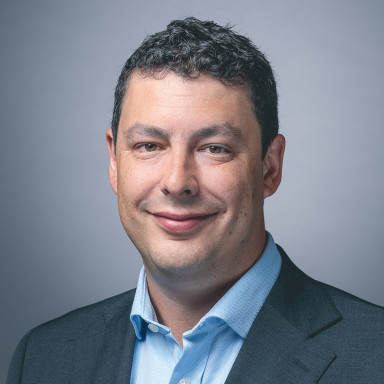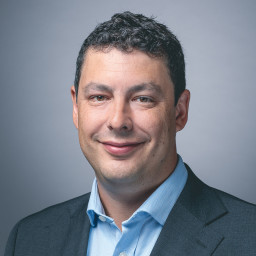- The fund is managed by Juan Valenzuela and Rebecca Young, who are experienced strategic bond fund managers
- The managers can invest flexibly across different bond markets
- The managers benefit from the support and challenge provided by a strong fixed income team at Artemis
- The fund doesn’t feature on our Wealth Shortlist of funds chosen by our analysts for their long-term performance potential
How it fits into a portfolio
The managers aim to provide a combination of income and capital growth over the long term by investing across different areas of the bond market. They aren’t afraid to position the fund differently to many peers in the Strategic Bond sector. For example, the managers had no government bond exposure at the end of 2021. This means the fund could provide something different to a bond portfolio, add some diversification to a shares portfolio, or be considered for an income-focused portfolio. The managers can invest in high-yield bonds and have the flexibility to use derivatives which adds risk.
Management team
Juan Valenzuela began his career in 2003 at JP Morgan. Since then he’s worked at SWIP, Alliance Trust and Kames Capital where he co-managed a Strategic Bond fund. Valenzuela joined Artemis in 2019 to join the fixed income team led by Stephen Snowden along with a number of his ex-colleagues at Kames Capital.
Rebecca Young began her career at Janus Henderson in 2009 and held positions as co-manager of the Janus Henderson Horizon Strategic Bond Fund and the Janus Henderson Preference & Bond Fund. Young left Janus Henderson in 2021 to join Artemis. The managers receive support and challenge from an experienced fixed income team, led by Stephen Snowden, that we rate highly.
Process
The managers shift between different areas of the bond market, moving between government bonds, investment-grade corporate bonds, and higher-risk high-yield bonds as market and economic conditions change. The fund's positioning is determined by Valenzuela and Young’s views on where we are in the economic cycle combined with their analysis of the prospects for individual companies and governments. Valenzuela leads on wider economic views. Young contributes to this too but leads more on credit selection.
When they're concerned about economic prospects, they're likely to invest more in lower-risk government bonds and less in high-yield bonds. They'll do the opposite and be more adventurous when they think the outlook's positive. They aim to have a good mix of investments across a variety of sectors, credit ratings (the quality of the bond) and maturities (the length of time until the bond matures) to reduce the risk of one area dominating performance. The managers want the fund to be balanced, with the potential to perform well in a variety of economic conditions.
Over the last 12 months, the managers have added to government bonds, taking the proportion of the fund invested in these from around 7% 12 months ago to around 38% at the end of February 2023. They have reduced exposure to high yield bonds over the same period from around 38% to 28%.
The managers have reduced investments in corporate bonds (issued by companies) over the period and increased investments in government bonds because of their concerns around the longer term impacts of the significant interest rate rises from many central banks during 2022. With government bond yields now a lot higher than they were at the start of 2022, the managers believe that these assets offer more diversification than they did and so could be beneficial if there is a recession.
The managers have also increased their duration over the last 12 months. Duration is a measure of how sensitive the fund is to interest rate changes, the higher the duration value, the more sensitive the fund is to interest rate changes. The managers think there is potential for a recession which would cause central banks to reduce interest rates from current levels. If this happens, having a higher duration would be beneficial for fund performance.
Culture
Valenzuela and Young are partners at Artemis, which is a private company. We think this structure is a good thing for investors, as both manager and firm are focused on the long-term prospects of the fund.
Fund managers at Artemis are required to invest their own money into their funds, and this means they succeed when their investors do. Artemis also provides an attractive environment for fund managers, allowing them the freedom to run money how they see fit without imposing a ‘house view’ on them. It’s also a collegiate atmosphere, with managers supporting and challenging each other.
ESG Integration
Investment teams at Artemis are encouraged to think for themselves and invest according to their own style, so the quality of ESG (Environmental, Social and Governance) integration across the firm varies. That said, recent meetings with the Artemis teams we back on the Wealth Shortlist suggest ESG is starting to become a more important factor. Artemis has a firm-wide policy to support the aims of international conventions on cluster munitions and antipersonnel mines and therefore the firm will not knowingly invest in companies which produce these weapons.
The firm also provides ‘responsible investing stamps’ next to each of its funds, which help investors see, at a glance, which forms of responsible investment are incorporated in each fund. Artemis votes on all their holdings, unless restricted from doing so, and fund managers engage with firms to develop their understanding, raise issues with management and monitor subsequent developments.
The managers are gradually taking ESG issues into account more when analysing companies for this fund. Along with the wider team, they engage with companies on sustainability issues and vote on key issues. That said, this is not an ESG labelled fund and the risk-return profile of the bonds they invest in remains the most important thing.
Cost
This fund has an ongoing annual charge of 0.59%, but we've secured HL clients an ongoing saving of 0.11%. This means you pay a net ongoing charge of 0.48%. The fund discount is achieved in the form of a loyalty bonus, which could be subject to tax if held outside of an ISA or SIPP. The HL platform fee of up to 0.45% per year also applies.
Performance
Since Juan Valenzuela took over as manager of the fund in September 2021, the fund has outperformed the IA £ Strategic Bond peer group average. Over this period the fund lost 9.47%* compared with an average fall of 10.63% for the peer group. Rebecca Young joined Valenzuela in November 2021. This is a very short time period to consider though and past performance isn’t a guide to the future.
It has been a challenging 12 months for bond investors and most of the fund’s investments have lost value over the period. While the fund lost value over the last 12 months, it outperformed the IA £ Strategic Bond peer group average during challenging and fast moving market conditions.
The area that provided the smallest losses was the high yield bond exposure, which is due to higher coupons (interest payments) reducing the impact of falls in price. High yield bonds typically have a lower duration value as well, which helped during the interest rate rising environment. Bonds issued by investment banks and insurance companies provided some of the largest losses over the period.
The willingness of the managers to invest differently to peers means performance could be different too.
| Annual percentage growth | |||||
|---|---|---|---|---|---|
| Feb 18 -
Feb 19 |
Feb 19 -
Feb 20 |
Feb 20 -
Feb 21 |
Feb 21 -
Feb 22 |
Feb 22 -
Feb 23 | |
| Artemis Strategic Bond | -0.32% | 7.34% | 3.57% | -2.43% | -5.53% |
| IA Strategic Bond | 0.63% | 7.97% | 3.77% | -1.70% | -7.02% |
Past performance is not a guide to the future. Source: *Lipper IM to 28/02/2023.
Find out more about Artemis Strategic Bond, including charges
Artemis Strategic Bond Key investor information


